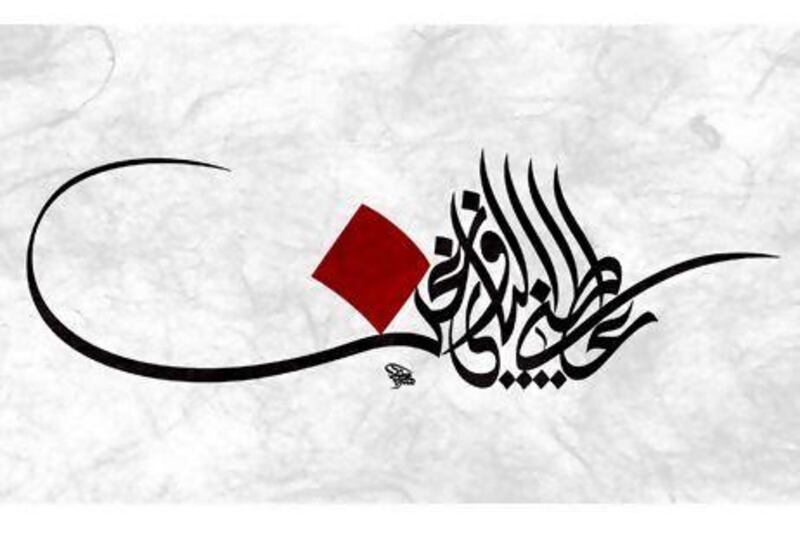Even if you don't understand the letters, you can appreciate the beauty of Arabic calligraphy. It has been studied and developed for centuries and the dimensions of the letters are based on the golden ratio.
"Calligraphy opens the door to aesthetic values that are not available in nature," says Majid Al Youssef, one of 12 calligraphers whose works are on show at Ara Gallery in Downtown Dubai.
"The anatomies of the letters come directly from human genius. Today, they are very mature and are very difficult to master but it is a visual heritage that we like to share with other people," he says.
Al Youssef, from Saudi Arabia, has four pieces in A Verse Imprinted: Islamic Art, which opened on June 4. While he adheres to the rules of the script, he has created his own modern interpretations, which combine bright colours and emphasise repetition.
One piece captures the opening line of a philosophical poem by Gibran and takes its title from the same words: Give Me the Flute and Sing.
"I create a visual journey around the text I am writing," says Al Youssef. "I also emphasise the most important words and the letters that hold everything together. I concentrate on harmonic designs."
Wissam Shawkat, whose works spell out Quranic verses and the name of Allah, not only exhibits in the show but also helped to select the artists.
Shawkat, an Iraqi, is a founding member of the Dubai Arabic Calligraphy Centre, which is hosting the exhibition alongside the gallery. Along with his co-founders Mohammed Abed Rabbo Allan and Fatma Saeed Al Bagali, he selected all the artists for the exhibition.
"We chose each artist according to their style. Each of them has a different approach and most of them are from the younger generation," he explains.
"Majid, for example, has the same thinking as me. He comes from a traditional background but he wants to push the boundaries."
In four paintings, Shawkat demonstrates his extensive knowledge of the different calligraphic styles (such as Thuluth and Diwani) but one of the pieces bears a style he invented called Al Wissam, complete with its own rules and dimensions.
"My message is that it is not necessary to do what others did 100 years ago. Calligraphy is an art form and it needs to evolve. I use classical scripts but I don't produce them in a classical way. The only way to break the rules is to master them first."
Beside the different examples of scripts from the calligraphers are two miniature paintings from the Iranian Maryam Gholami, who paints incredibly detailed flowers and birds. Her works are examples of the decorative art that goes hand in hand with calligraphy.
"You cannot take illumination or ornamentation out of a show on Islamic art," says Shawkat. "These also need special skills."
A Verse Imprinted: Islamic Art runs until August 31
Follow us
[ @LifeNationalUAE ]
Follow us on Facebook for discussions, entertainment, reviews, wellness and news.





